Review: Harassment
Publisher: TDC Games, Inc.
Year: 1992
Tagline: THE GAME THAT LETS YOU BE THE JUDGE
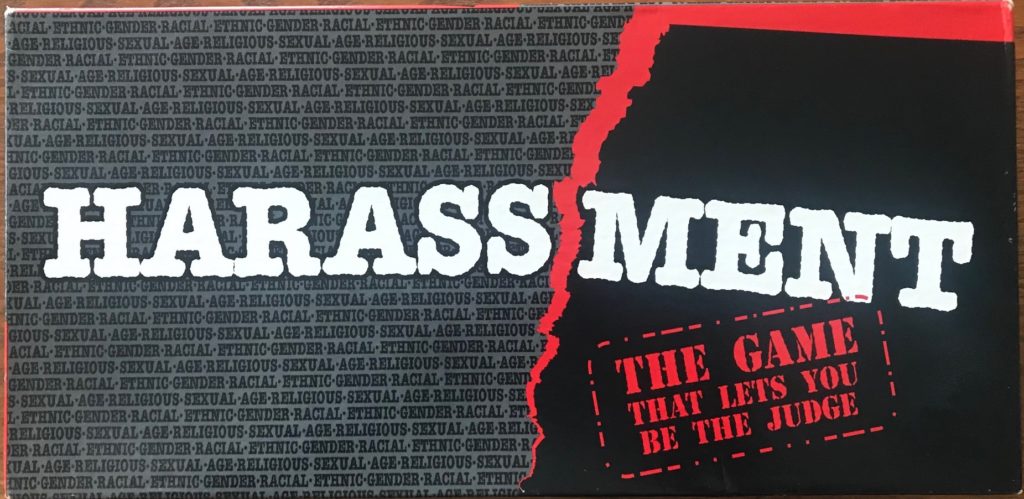
how we met
Harassment is a game I found during that silly exercise when I looked at games by year on BGG. Thank goodness I only got through like 2-2.5 years or my wishlist would be even more ridiculous. But a game from 1992 about Harassment? I’m interested.
I eventually ended up purchasing Harassment on eBay, something I rarely do. But this copy was sealed and cost scarcely more than I could expect to pay at a thrift shop, shipping included. So I should not have been surprised when I received a cash-on-delivery slip from my local USPS because the sender had shipped as media mail (a cheaper form of shipment which games do not qualify for). I mildly harassed the seller until we struck a deal, I agreed to cover a small portion of the fee, and the game was mine.
FUN FACT: I’m not sure about your post office but mine seems to always check media mail. Just this past week I got a kickstarted RPG book in the mail that was opened and examined. And it was rather book-shaped.
Within a year of my purchase I would find another copy of Harassment in shrink for $1 at a local thrift shop. I believe eventually I will find anything, and this is one game that helped solidify that theory.
how it plays
The goal of Harassment is to be the first to the end (or have the most points after however many cases you decide) by correctly guessing how your fellow players will judge specific cases of possible harassment. Players can split into individuals or, if you have a lot of people, into teams.
One single person will play the JUDGE each turn. The JUDGE begins the turn by reading out one of the cases from The Case Booklet. The rules do not specify or suggest how to choose a given case, so you can go in order, pick at random, or read a couple of lines to find one that strikes your fancy.
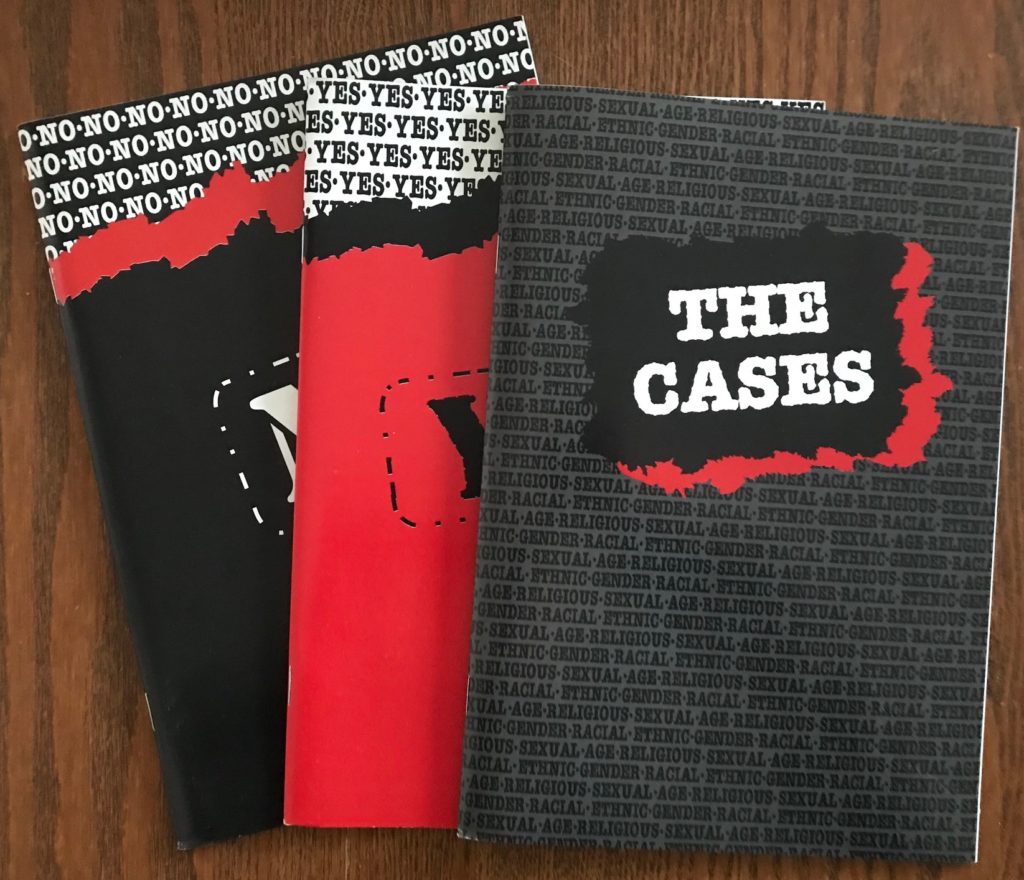
After the JUDGE reads their chosen case, the player to their right reads the YES argument out of the Yes Booklet. Then the player to the JUDGE’s left reads the NO argument out of the No Booklet. After both arguments have been read, all players except the JUDGE may discuss if they want to. After the discussion is over, the JUDGE votes on how they feel about the case by playing one of their voting cards face down: YES if it was harassment at either 5 or 10 points, or NO if it was not harassment at either 5 or 10 points.
Then the other players bet on how they think the JUDGE ruled by placing their own vote cards face down. They too can bet 5 or 10 points on their decision, depending on how sure they are.
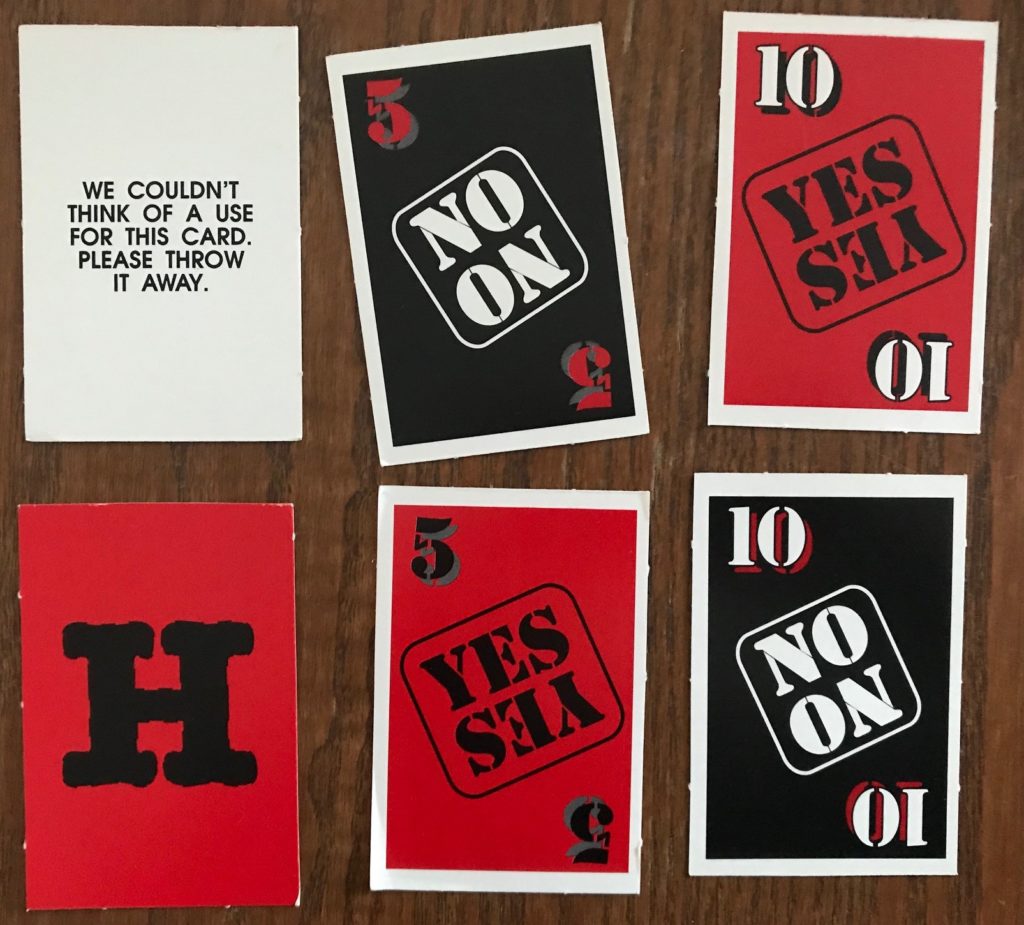
Then everyone reveals their cards, points are assigned and the JUDGE position passes to the left.
If players guessed correctly (meaning a correct yes/no regardless of points) they receive the points they bet. If they are incorrect they lose the points they bet. The JUDGE receives the points on their card only if a majority of other players correctly guessed their judgment. They do not lose points (so always play 10 point cards as the JUDGE, guys).
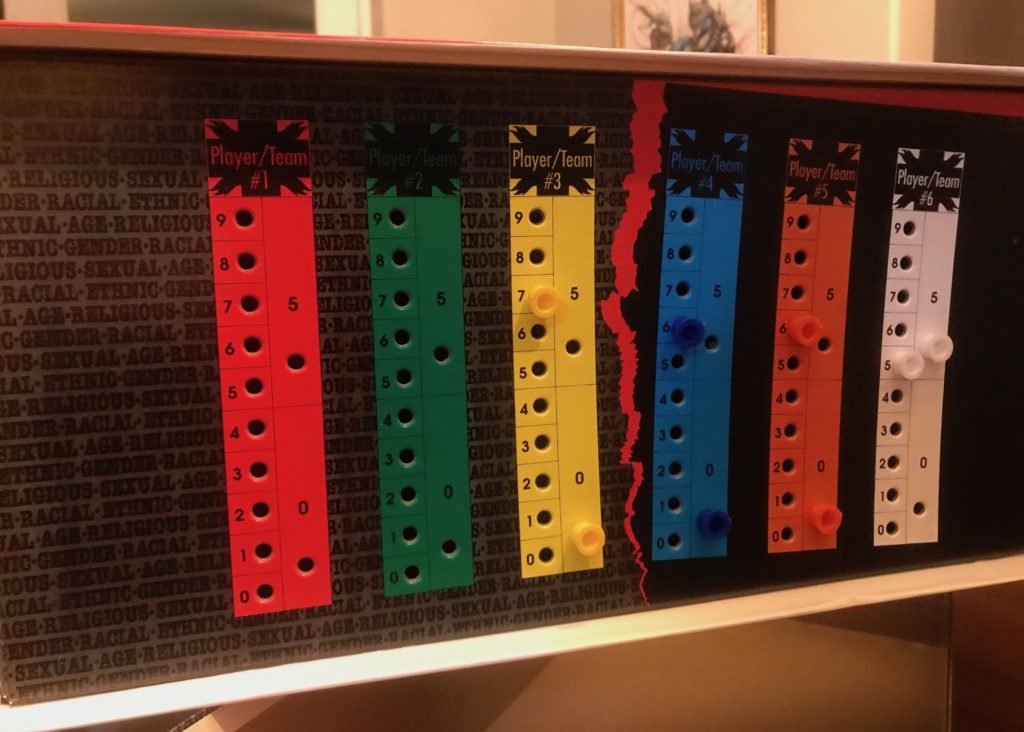
Play continues until each player has been JUDGE twice or until some other ending point that you determine. The player with the most points wins!
how it went
This was an interesting game. It was not as ridiculous as I expected, and I kind of like games that force people to argue viewpoints that they don’t necessarily agree with (I’m looking at you, Loudmouth). There were a few cases that were so obvious that even our snarky group did not have to think or argue or wonder about their bet. But we always started our Yes / No readings with a very decided, “Yes!” or a very resolute, “No!”
And some of the cases aren’t all that obvious. Some of the issues are petty while some are perfectly insidious. It’s pretty interesting.
The cases in Harassment range from things like a boss able to watch you work constantly from where their office is, or a shopper yelling at someone that has 12 items in the ten items or less line, to truly vile things like a person that likes to give hugs.
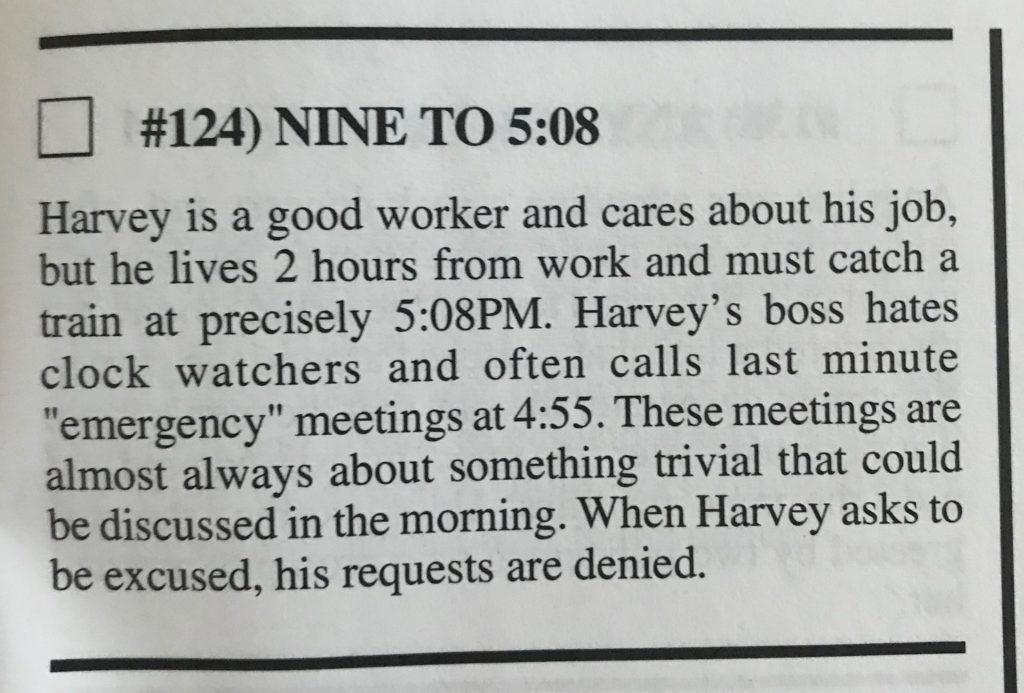
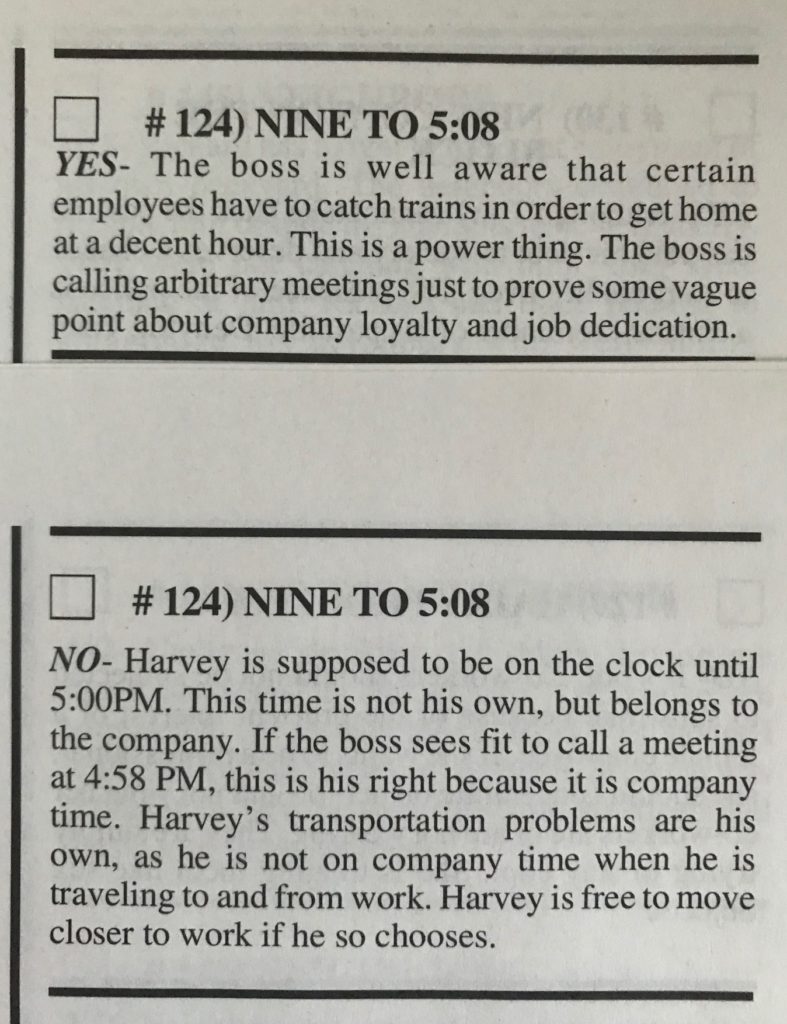
I like, too, that the game allows for some nuance in the wagering of points. That’s not a whole lot of wiggle room, but it allows you to kind of say, “I think you will say this but I’m not 100% sure.” Because maybe a reasonable person could go either way on some of these. Or argue specifics beyond what is presented to the group.
You also might decide to judge a case a certain way based on the grace of the person involved (spoiler: usually not much grace) versus determining whether or not someone was harassed. For example, we can argue the ethics of a person standing with 12 items in the ten items or less line, but the game is really asking whether the person that loudly called them out and shamed that shopper was harassing them. The offended shopper yelled, “I can count! Can’t you?” And I mean, maybe they can’t. Or maybe they just don’t care. Or maybe they are in a hurry. Or maybe they are distracted by extremely distressful personal issues. Or maybe they think they are better than you. And why did the other shopper yell at them, maybe the same reasons? We really don’t know. There’s something to be said for giving the benefit of the doubt. Although I wouldn’t always bet 10 points on it!
And that’s because Harassment scenarios, like real-life, are full of assholes. And sometimes the assholes are harassing people, and sometimes the assholes are getting harassed by people. And if you are harassing an asshole, you are a harasshole. It feels like the game is often trying to trick you into voting against the jerk regardless of who is being harassed, which just goes to show that Harassment is hanging its hat on what was probably a less discussed and understood word in 1992, harassment.
We all played decently, but Bill was ahead for most of our gameplay. And Bill won Harassment!
play or pass
Mmmmm, pass. Not a big, booming pass recommendation because I think Harassment has the potential to point out biases and assumptions that we have. The judgment is not as straightforward as one might assume. The game forces you to constantly reshape your definition of harassment, but many of the scenarios rely on confusion or righteous irritation to create the nuance that exists in real harassment stories. And maybe that’s the point.
But it’s still a party game, and we had a good time.